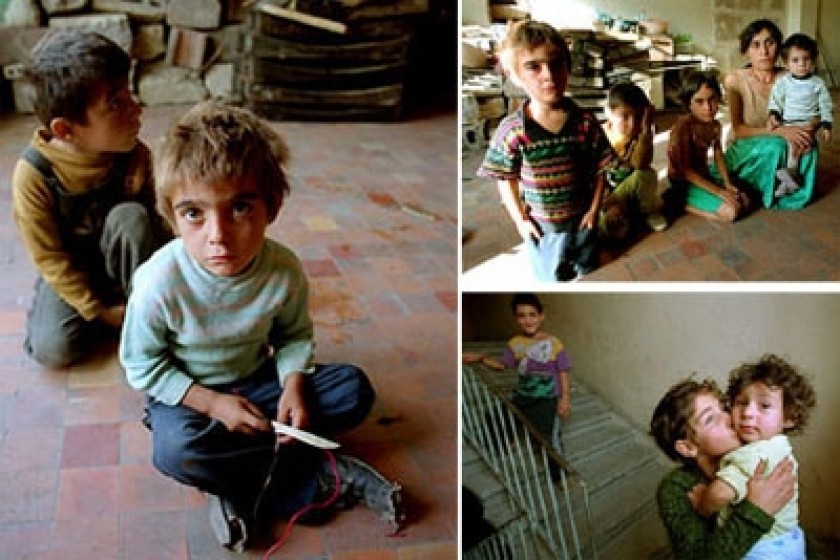
Poverty Has Decreased at the Price of Welfare and Pensions
According to official data, the poverty level in Armenia in 2005 was 39%. "During the first years of implementation of the Poverty Reduction Strategy Paper (PRSP), an unprecedented reduction in the number of very poor people has occurred, " states the first half-year PRSP report for 2004-2005.
Expert analyses prove that extreme poverty has decreased in the country at a higher rate than poverty itself. UN experts predict that in 2006 it will be possible to overcome extreme poverty in Armenia. The government attributes this to the economic growth registered in the country and its impact on the poor.
That is why the government has decided to reconsider the PRSP and the ministries currently involved in the program are discussing the fulfillment of the tasks envisaged in the program. "When the PRSP was being drawn up, 2001 statistical data was taken as the basis, according to which the poverty level in the country was 54.7% and as a consequence our work was somewhat limited. Today, in 2006, it is necessary to review the program," said Ashot Yesayan, a specialist with the UNDP.
The PRSP envisages overcoming poverty in Armenia by the year 2015. Since the program was initiated in 2003, the government's role has been a short-term reactive policy paid for with state resources. The state's contribution has doubled, from AMD 12 billion to AMD 24 billion. As a result, the number of poor families included in the system of government aid has dropped from 210 thousand to 130 thousand. The experts at the Armenian UN office emphasize that the decrease in the poverty rate has occurred thanks to an increase in pensions, as a result of which a significant group of single pensioners has been left out the system of family allowances. It has also been promoted with the following measures:
Teachers' salaries have reached AMD 50.5 thousand per month,
Schools have been renovated,
Medical consultations in polyclinics have been free of charge as of 2006,
Social pensions have increased,
Pensions for war veterans have increased, etc.
Studies by local UN specialists have shown that if all of the state subsidies, privileges, pensions, and other allowances are deducted from the calculations regarding the level of poverty, this level will increase by 16.3% and extreme poverty will increase by 18.9%, thereby reaching the poverty level of 2001-49.9% and 16.2% respectively.
"All of this proves that the poor population is able to make use of economic growth mainly through its redistribution, but not through its distribution," the specialists concluded.
Ashot Yesayan, who was deputy minister for labor and social security during the implementation of the PRSP and a supporter of its establishment does not share the view held by much of society that growth has not contributed to the reduction of poverty.
"Economic growth has not contributed all that much to the overcoming of poverty, which is why the redistribution of profits is a very important tool. In contrast to $500 million in the state budget in 2005, the 2006 state budget of Armenia amounts to $1 billon, which permits the government to redistribute the results of the economic growth."
Nairuhi Jrbashyan, a specialist with the UNDP's social monitoring program, told us that at the foundation of the structure of the minimum daily basket lie calculations made back in 1996 that no longer correspond to consumers' choices. "If the minimum basket doesn't change, by calculating the level of poverty every year based on that basket we make the comparison according to 1996 criteria," she said. At present the national statistical service is reconsidering the structure of the basket, which means that after the adoption of new basket the poverty percentage will change and perhaps increase.
The PRSP plan of action comes to an end in 2006. Was the problem emphasized in the program solved? "The program has short-term, medium-term, and long-term goals. We are talking in this program about the most acceptable poverty, the classic characteristics of which are house, clothes, food," Yesayan said. Ashot Yesayan suggested always taking account the Armenian mentality while talking about poverty: "If someone doesn't have a car he considers himself poor; if he has a Zhiguli but the neighbor has a Mercedes he considers himself poor. Most villagers don't talk out loud about their earnings, it's horrible."
Expert studies reveal that compared to the capital city, in the regions, the pace of poverty reduction is slow. Before 2003, poverty rates were higher in the cities; in 2003-2004 villages, too, had rapidly become impoverished, which is considered to be the norm. What is worrisome in Armenia is the trend of deepening regional inequality. "The indices of poverty outside Yerevan compared to the indices of poverty in the capital are about 1.7%. This is when in 1999 it was 1%, which attests to the extremely uneven development of the country over the recent years." ( 2005 National Report On Millennium Development Goals In Armenia )
Photos by Onnik Krikorian
 Videos
Videos Photos
Photos




Write a comment